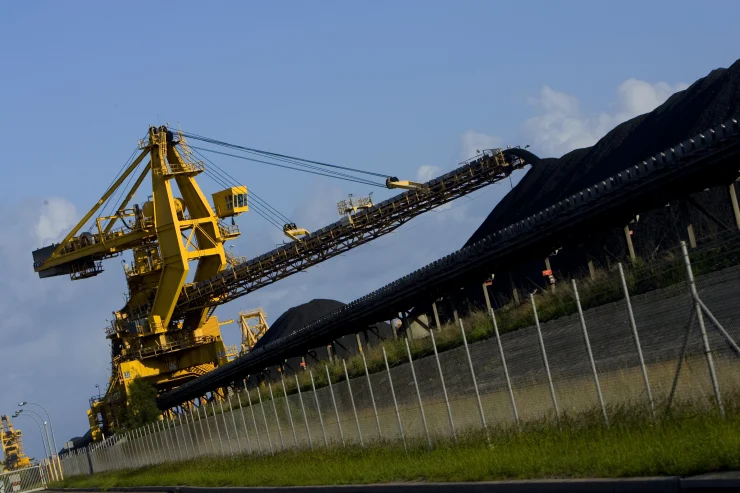Coal exports overtake iron ore as energy crisis ignites prices
19 December, 2022

The figures from the Department of Industry, Science and Resources show the government has revised up its previous earnings forecast for thermal coal – the type of coal burned in power stations – by $13 billion this financial year and $17 billion in 2023-24.
Australia’s combined coal exports, which also include metallurgical coal sold for use in the global steel-making industry, are now forecast to earn $132 billion in 2022-23.
“Many Western nations are having to pay substantially more for energy, on the high chance that sanctions on Russia will see some Russian production — particularly gas and coal — become stranded from world markets,” the report says.
High coal prices have been delivering stunning increases in sales revenue for Australian coal miners such as Whitehaven, New Hope and Yancoal, but have been contributing to soaring electricity bills for Australian homes and businesses because of the higher cost of burning coal to generate electricity at the nation’s largest power stations.
The Albanese government last week unveiled emergency measures to protect consumers from a forecast 50 per cent increase in electricity bills in the next two years, including setting a price cap on domestic coal sales at $125 a tonne for the next 12 months.
The uplift in Australia’s coal earnings comes as the International Energy Agency declares world coal use is likely to have risen 1.2 per cent in 2022 to a record high, despite accelerating pledges among countries to wean themselves off the emissions-intensive fossil fuel.
However, the longer-term outlook for Australia’s coal industry remains deeply uncertain. Power generation from renewable energy continues to rise, large resources companies are increasingly divesting or announcing closures of their coal assets, and financial institutions are pledging not to make new investments in the sector, citing concerns about its future demand and global warming.
The benchmark price of high-quality thermal coal traded at the Port of Newcastle is expected to fall from $US360 a tonne to $US200 by 2024, but is not expected to drift back to pre-coronavirus levels for “any forseeable timeframe”, reducing its competitiveness.
“Thermal coal remains subject to challenges with finance, insurance and long-term global demand, all of which have made supply side responses slow and difficult to manage,” the federal trade report says. “These factors will likely become more forceful over time, putting the sector into a permanent higher-price phase.”
Earnings from Australia’s other major energy commodity export, liquefied natural gas (LNG), have been revised up by $1 billion this financial year. It is now expected to account for $90 billion in export earnings, up from $71 billion a year earlier.
Earnings from iron ore, the key steel-making raw material that usually ranks as the nation’s most valuable commodity, were revised down for the financial year, and are set to slip from $130 billion to $113 billion in the past financial year. Outbreaks of COVID-19 and a property market slowdown in China, by far the biggest customer of Australian iron ore, have continued to weaken demand for steel.
Meanwhile, demand for Australian supplies of raw materials that will be needed in increasingly vast quantities to build clean energy technologies including copper, nickel and lithium, are set to reach almost $33 billion in 2022-23 compared with $22 billion in 2021-22.
As the clean energy revolution and uptake of electric cars gathers pace, Federal Resources Minister Madeleine King said Australia’s earnings from lithium were predicted to increase more than ten-fold in two years, from $1.1 billion in 2020-21 to $17 billion in 2023-24, becoming Australia’s sixth-largest resources and energy export commodity.
“These materials, along with other critical minerals and rare earths, will be crucial to low-emissions technologies such as batteries, solar panels and electric vehicles, and will help Australia and the world to meet net-zero commitments by 2050,” she said.
King said the figures underlined the importance of the resources sector at a time of slowing global growth, accounting for around 10 per cent of gross domestic product (GDP) and directly employing more than 250,000 people.
Useful Links:
Source: www.smh.com.au
